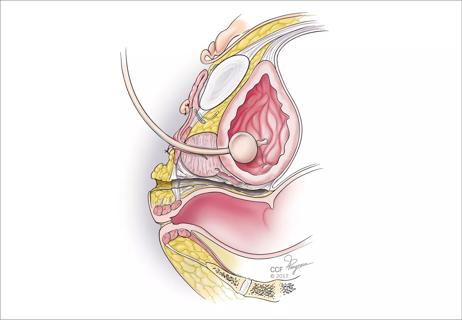Study highlights patients’ and providers’ needs for additional information and resources

Cleveland Clinic is a non-profit academic medical center. Advertising on our site helps support our mission. We do not endorse non-Cleveland Clinic products or services. Policy
The rapid uptake of noninvasive prenatal testing (NIPT) in prenatal care presents distinct challenges to obstetric providers to offer pregnant women the information they need to make informed decisions about this test. In a recent study, we identified best practices regarding the implementation and presentation of NIPT as a testing option.
Current American College of Obstetricians and Gynecologists practice guidelines recommend offering aneuploidy testing to pregnant women of all ages. NIPT, one of the newest aneuploidy testing options, analyzes cell-free fetal DNA in maternal blood. It is more sensitive and specific for trisomy 21, 18 and 13 than conventional serum analyte screens; provides information about sex chromosome aneuploidies; and may soon be able to screen for fetal genomic microdeletion syndromes.
Informed consent remains an essential component of NIPT. Yet the pace with which NIPT has been integrated into prenatal care has offered little opportunity for the design and implementation of effective, evidence-based strategies to support a patient-centered informed consent process. Such strategies are critical for providers when they discuss NIPT as an option with pregnant patients.
We used qualitative methods to analyze self-reported needs for information about NIPT and identified the decision-making resources needed to structure an effective, patient-centered consent process. This data allowed us to explore a variety of perspectives and personal experiences in participants’ own words, providing a context in which to understand the patient-provider dynamics.
The study included 137 women who were either pregnant or had delivered in the past three months. Over 18 months, a series of focus groups and in-depth interviews used a series of specific questions to identify participants’ perspectives on counseling, decision-making and informed consent.
Participants were asked to identify the information and resources needed to make an informed choice about NIPT, to speak about their experiences with the NIPT process, and to give their recommendations on designing and implementing clinical tools and strategies.
Digital focus group recordings were transcribed verbatim and verified for accuracy by the research team. Data analysis — an iterative, progressive process of data immersion, coding, memoing and theme identification — was inductive and consistent with grounded theory.
Participants favored NIPT over conventional screens because of its accuracy, early timing, ease of testing and ability to determine fetal sex. Yet such advantages did not simplify decision-making, minimize the importance of the informed consent process or reduce the amount of support sought from providers when trying to make informed choices.
Participants identified several factors required for effective counseling:
We also examined participants’ knowledge and attitudes about the use of NIPT for conditions other than trisomy 21, 18 and 13. We found that participants were generally unfamiliar with sex chromosomal aneuploidies, the prevalence of such aneuploidies and the spectrum of associated health issues.
In addition, one of NIPT’s emerging applications is screening for a limited number of fetal genomic microdeletion syndromes. Yet participants were even less familiar with the concept of chromosomal microdeletions and the clinical phenotypes of associated syndromes (upon which some testing platforms are based) than they were with sex chromosomal aneuploidies.
Participants acknowledged that NIPT’s growing capabilities would increase the volume of information that must be effectively communicated during the informed consent process. At the same time, they were concerned that time not be taken away from the discussion of other critical educational components in prenatal care.
There is a critical need to offer sufficient information and resources to enable patients to make informed decisions about NIPT. However, the use of NIPT for screening for microdeletions, as well as its use among low-risk populations for research and validation, will further strain the resources of obstetric providers.
Not only are new approaches to education and informed consent required, but efforts must also be coordinated among obstetricians, nurse midwives, and maternal-fetal medicine and prenatal genetic specialists.
We are currently investigating these issues in larger and more diverse populations. We are also developing and testing resources that will help both providers and pregnant patients meet the challenges associated with NIPT.
The study, led by Dr. Farrell, of the Department of Obstetrics and Gynecology and the Department of Bioethics, was supported in part by a March of Dimes Foundation grant. Collaborators include Pat Agatisa, PhD; Mary Beth Mercer, MA; Marissa Smith, CGC; Elliot Philipson, MD; Angela Leek; and Rebecca Starck, MD.

Deprivation is linked to impaired glucose intolerance and racial disparities

Artesunate ointment is safe well and tolerated patients with vulvar intraepithelial neoplasia

A case-based discussion of efficacy, eligibility and use

Workshop curriculum was valued by some, while others would have preferred time for themselves

Study finds lower incidence of endometriosis than in cisgender patients

Large randomized study compares embryo growth kinetics and live birth rates between culture media

Surgeon experience is key to reducing adverse events

Introducing Laura Detti, MD, newly appointed Chair of the Department of Subspecialty Care for Women’s Health